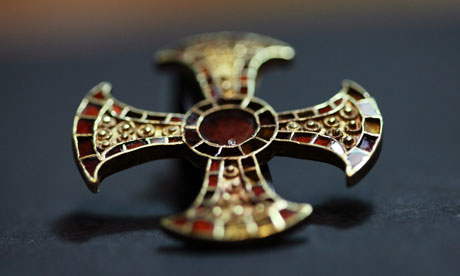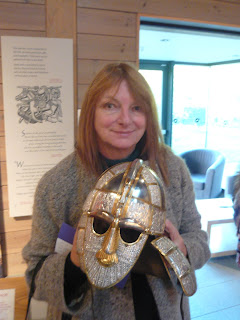When I came to research Early English medicine for
The Handfasted Wife I found that there was no shortage of medical texts in the corpus of Anglo-Saxon writing. There are four books on healing in Old English and these are influenced by Classical learning on the topic. What I consider very interesting are 'middle practices'. This is the accommodation of Christianity to popular needs, the integration of native ideas with classical Christian concepts. It represents a Germanic-Christian world-view often referred to as Augustine. Early medieval thinkers made little attempt to separate natural from supernatural.Nature was a revelation from God. All phenomena, all of nature, natural healing and miracles were understood as part of God's created natural order.

The Church consideration by the mid-eleventh century was that Magic was illusionary, a deception of the Devil to trap souls, and it is this that brings the Church into conflict with practitioners of folk remedies who used religious chants whilst healing. Their charms lay in between magic and miracles. Yet, the Anglo-Saxon belief system asserted that God is the true leech or doctor, the one who controls sickness and health, and to achieve well being one must appeal to God. Below an illustration from Beowulf where the Devil, ever present, is waiting to catch man.
 |
| The monster in Beowulf as representative of the mouth of hell |
All things were interconnected in the Anglo-Saxon world view. Charms were thus a logical part of the system of medicine. The idea of women as healers arises out of the problematic evidence of the condemnation of women's magic or witchcraft. It is likely that in the literate communities of early monasteries medicine was practised by men and women. There may have been a shift to the possession of healing power from lay wise women to clerical wise men. By the twelfth century there was a separation of spiritual and physical medicine. At the period of The Norman Conquest the practise of sympathetic magic and a lack of empirical observation may seem to us, at first glance, barbaric. Yet, the information in manuscript marginalia and in medical manuscripts themselves reveal a true grasp of herbs, anatomy, and a knowledge of medicine. The illustration below shows mugwort, a herb that became associated with witchcraft.
 |
| mugwort plant and it grows in hedgerows |
A Charm- Sing this prayer on the Black Ulcers nine times, first, the Pater Noster
Seek and you will find, I adjure you through the father and the son and the holy spirit. Do not grow any greater but dry up. Upon the asp and the basilisk you shall tread on the lion and the dragon.
From The Trotula- For the Pain of the Vagina after Birth
Take rue, mugwort and camphor, grind them well and, having prepared them with musk oil or penny royal oil and warmed them in a pot, wrap them in a cloth and insert as a suppository.
 |
| The Anglo-Saxon Herb Garden |
Bibliography
Karen Louise Jolly- Popular Religion in Late Anglo-Saxon England, Elf Charms in Context -University of North Carolina Press.
Steven Pollington-Leechcraft, Early English Charms, Plantlore and Heeling-Anglo-Saxon Books.
Bill Griffiths-Aspects of Anglo-Saxon Magic-Anglo-Saxon Books
Monica H. Green- The Trotula- An English Translation of the Medieval Compendium of Women's Medicine-University of Penn Press.






















































